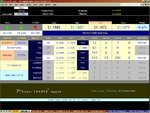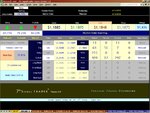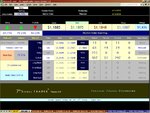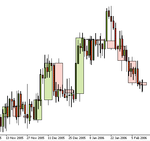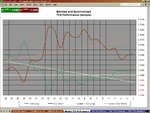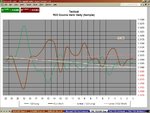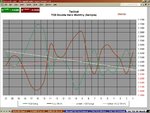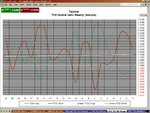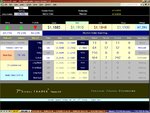7thSignalTrader
Well-known member
- Messages
- 351
- Likes
- 7
echelon4x said:...The question for me is how best to derive the probabilities...
Bingo! Yep - that's the key in what I do. I collect data just like any researcher would, no different. My data is extracted from the real market data. So, I go one step further by creating the metadata. So, for example: I might take a measure between today's high and yesterday's low. Ok, that is now called a "Dimension". So, I now have at lest one dimension in which to do further exploration.
See, the "theory" came from the "idea" that there might be something worth me spending my time studying between today's high and yesterday's low. Then my job is to find out whether or not there is any "there", there. Is there any repeatable "substance" there. The base math on that one was very simple: (Today's High - Yesterday's Low). That becomes the baseline math. Now, I could either find enough empirical evidence to go ahead and build an Indicator out of that for a certain number of bars, or I can make the decision to make that baseline extensible by wrapping it with either more math from more dimensions and/or logical statements that connect its Input or Output to yet another Indicator and or Signal.
The mathematics becomes more sophisticated when you begin to link one Indicator to another to form a Signal. But, at the core, the root math is pretty simple. Things only get more complex when you reach the point of having to write systems integration logic. That is when things can get real interesting, then frustrating, then apparently useless and then all of a sudden awe inspiring because you hung in there long enough to “cracked the code” that was cracking YOU – and now you have something that is simply beautiful to behold – because you were patient. The combination and permutations are endless. That is why building any non-conventional trading system from pure ground-up research is so exciting, time consuming, complex, demanding and taxing on your creative ability.
You have to create that which never before existed. And, that is the hard part, but it is also the rewarding part once your ideas begin to "gel" into something tangible.
Most good raw OHLC patterns did not just jump out at me. Most of the really good ideas took years to really fully understand and apply correctly. They were there all the time, but my eye had not yet been trained enough to notice them at work. Other people stare at charts all day long. I like to look at raw data. A huge difference of view point, but we are all looking at the exact same data.
If you could ride a photon of light at 286,282 miles per second and are being observed by your brother here on earth passing by – you will see things and observe things that your brother simply cannot see and observe. Likewise, your brother will see and observe things you can’t possibly observe and/or see – yet both of you will be sharing the exact same “relative” space. Why? Because you both have two different frames of reference about the exact same event.
So, I can see TCD’s simply by looking at a chart or raw OHLC data, but unless I tell someone what a TCD is, they won’t be able to see it – or, they might see it in their own way (without having a name for it) but have no idea what it means or how significant they are to the Day Trader even though they are absolutely indispensable to all Day Traders on the planet! Why? Because it is logically and physically impossible to trade against the dominant “real-time” TCD and not lose money 100% of the time! Yet, most people don’t even see them – or know that they even exist.
Your probability calculations/results are going to be no better than the underlying "base" of components that you are analyzing. So, Today's high minus Yesterday's low will produce a delta value. That delta value is metadata. That metadata comes from the market data, but it is not market data in and of itself. It is "data" about "data". That's what meta means. Meta is: Instead of; representing; in lieu of; replacing the original; substitution for; etc. This system is now 100% meta driven, aside from the actual real-time market OHLC inputs - everything else is all meta.
There are many dimensions to explore in just the OHLC category. I call these Primary Dimensions because they use raw/actual market data to generate a value, typically a delta of some sort. But, once I get to the Metadata, the number of Dimensions becomes infinite and the exploration possibilities are endless. All you need is to locate your set of Dimensions at the Meta or Primary level that work for you. I don't need to explore ever single Dimension before I find enough to build a solid trading system. If I want to make the system more sophisticated and more precise, then I can decide to explore more Meta Dimensions and do more integration work, which is precisely what I have decided to do with the new Alpha-5P Dimensions.
Alpha-5P will consist of previous Metadata (Alpha-4 ), new Metadata and just five (5) pieces of real market data with two of them being historical market data points and three of them being real-time market data points (the current Open, current High, current Low, previous High and previous Low). The Alpha-5P's will be calculated using Metadata alone consisting of forty four (44) meta components (numeric Inputs) all calculated from Alpha-4. It is simply taking a more in-depth look at the Alpha-4 output and creating a whole new system module from a new/different vantage point.
Again, once you get to the meta level after having created enough solid Primary Dimensions form baseline OHLC inputs, the possibilities for finding new Indicators and new Signals becomes endless.
It is a brave new "unconventional" world out there!

